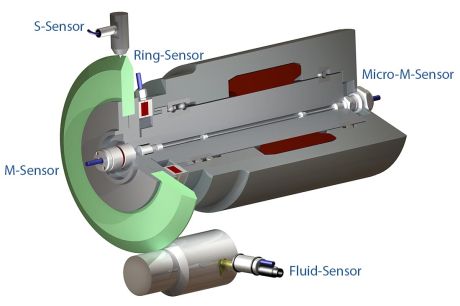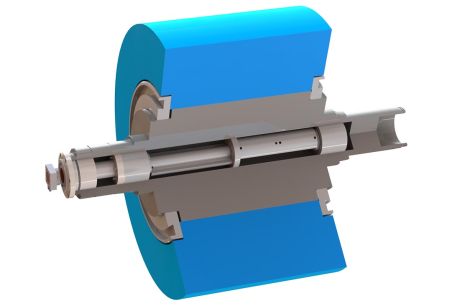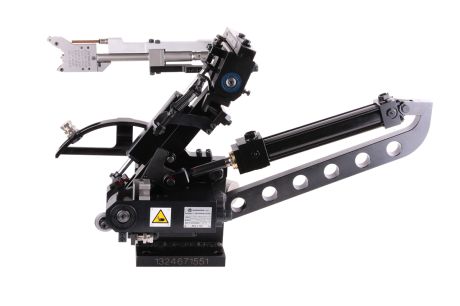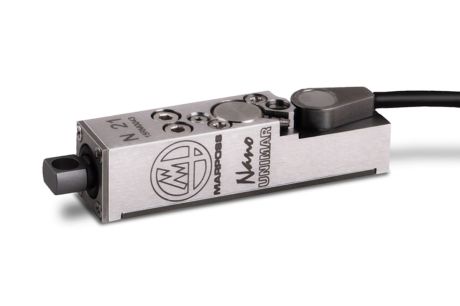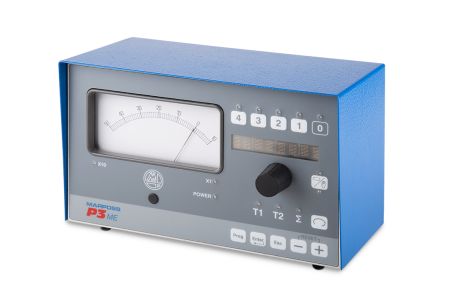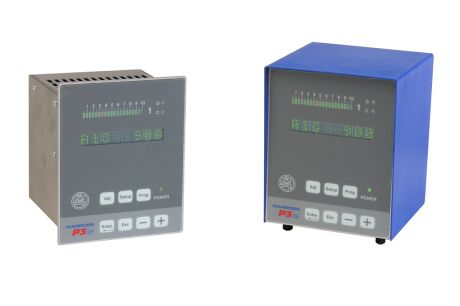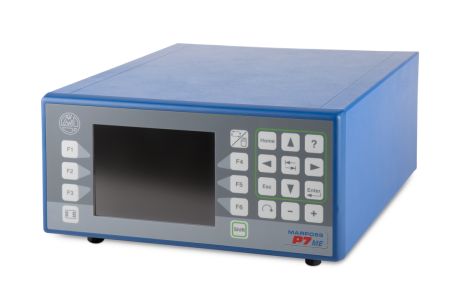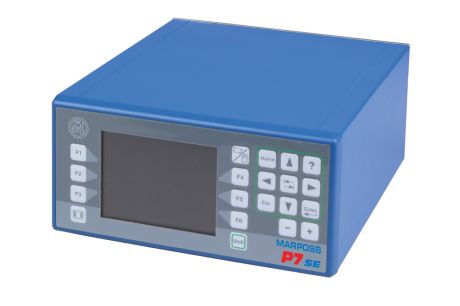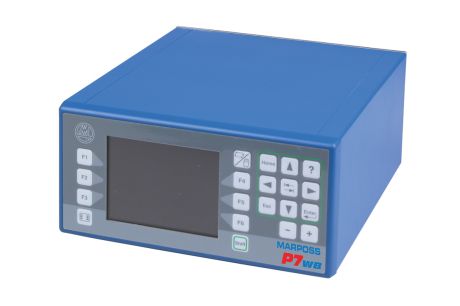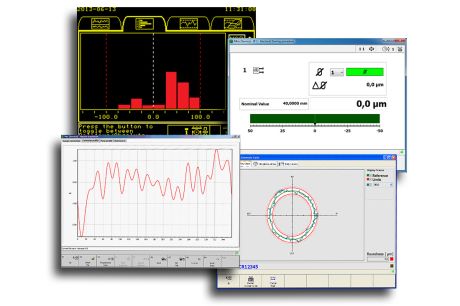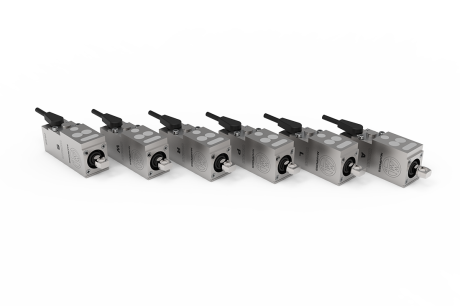Multifunction Electronic Unit for Process Control on Grinders
P7
To improve the quality of the pieces produced and to lengthen the service life of grinding machines, since several decades are available on market systems for control of workpiece dimensions and mechanical conditions of the machines during working cycle. These are devices for the measurement of pieces, for the measurement and reduction of vibration due to the unbalance of the grinding wheel; for the analysis of signals from acoustic sensors, thermal transducers and for analyzing mechanical deformations. There are specific devices for each of the above functions, each with its own physical characteristics and their interfaces. It 'obvious that different systems involving different installation modes complicating the general plant and the machine logic program. P7 has the main feature of being able to connect and manage all types of sensors and transducers so with simplify the installation and the dialog mode with the PLC or CNC machine. Also the display interface dedicated to the operator of the machine is as homogeneous albeit specific for the different functions.
P7 is a modular device whose dimensions and performance are configured as a function of the necessary controls to the specific machine. There is a master board that coordinates and manages the different cards / functions and presiding over the mode of communication with the logic of the machine and the operator interface. The programming of the different cycles is at the end user care that determines, entering the proper values for the parameters, the characteristics to be monitored before, during and after the machining process. Is possible automatically acquire the dimensions of the diameters or lengths of the pieces, to assess vibrations, analyze noises, temperatures, comparing with thresholds programmed the various values in order to take decisions to the machine and / or to the operator care.
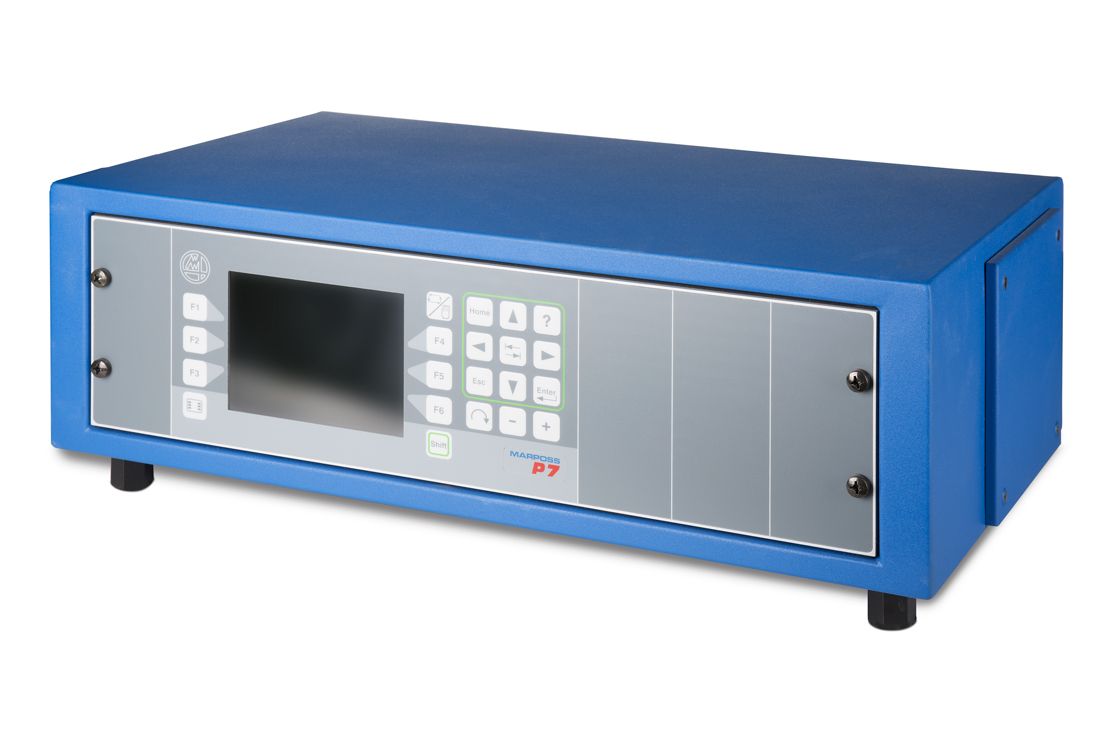
P7 is a multifunction device that in a single structure of modular sizes can manage the main control functions necessary to drive the grinding process: Measurement in process and post process, balancing of the grinding wheel, Noise Analysis caused by the impact wheel / piece, wheel / diamond or by accidental impacts, control of the operating environment temperature or the workpiece or of specific machine parts, deformation analysis, evaluation of efforts, all variables to keep under control for the proper functioning of the machines.
A peculiarity of the multifunctionality of P7 is the homogeneity of interfacing with the control unit of the machine. There are always the same type of interface and the same rules for all control functions: physical I / O, fieldbus, Ethernet. The display has a single interface that can be a dedicated display or a program to be installed in the machine PC. This last feature makes available detailed information on how to evolve the various parameters monitored to allow the End User to certify the production and to monitor the service life of the machine itself.
- Possibility of automatic control and therefore not dependent on operator skill
- Simplification of the installation of the various control functions
- Increase of production quality
- Uniformity of inspection requirements
- Improvement of the operating conditions of the machine
- Constant level of quality of production
- Reduction of processing times
- Increased productivity of the machine
- Facilitation of the operator of the machine activities
- Matching and check of control parameters inserted by the operator
- Possibility of automatic programming of the control parameters
- Reduction of spare parts for control equipment used in the different machines
P7 has a modular design based on the size of the drawer that contains the various functions cards, there are configurations with 4/6/8 slots.
There are drawers with integrated panel and others with the predisposition to manage one or two remote panels that can be connected via Ethernet with the PC machine on which must be installed the Human Interface software (called MHIS).
A further application flexibility derives from the possibility of interfacing with the machine's PLC. There are the traditional I/O boards each with 32 signals or slave for fieldbus like: Profibus, Profinet, Interbus S, SERCOS.
Each hardware configuration of P7 system is completed with a configuration file of the application software that specializes the different applications. To reconfigure the P7 software is available a program called "Configurator" running inside a PC. This allows managing the same hardware for different software applications, thus limiting the number of physical parts that must be handled by the client who had multiple machines with installed P7.
BROCHURES AND MANUALS
| Brochure | User Manual | |
|---|---|---|
| English |
P7 - hardware: (672.74kB)
|
P7SYS - ND: (1.72MB)
P7SYS Optoprocess: (221.07kB) P7SYS - Post Process: (4.09MB) P7SYS - Protomar: (3.46MB) P7SYS - Wheel Balancing: (4.12MB) P7SYS - Common Parts: (8.96MB) P7SYS - ACOUSTIC EMISSION: (3.80MB) P7SYS - In Process: (9.42MB) |
| Italian |
P7 - hardware: (685.24kB)
|
P7SYS - Protomar: (3.18MB)
P7SYS Optoprocess: (226.49kB) P7SYS - Post Process: (4.02MB) P7SYS - ND: (1.70MB) P7SYS - Wheel Balancing: (4.05MB) P7SYS - Common Parts: (8.12MB) P7SYS - ACOUSTIC EMISSION: (3.74MB) P7SYS - In Process: (9.32MB) |
| German |
P7 - hardware: (736.09kB)
|
P7SYS Optoprocess: (240.52kB)
P7SYS - Post Process: (4.04MB) P7SYS - Protomar: (3.45MB) P7SYS - Wheel Balancing: (4.13MB) P7SYS - Common Parts: (8.16MB) P7SYS - ACOUSTIC EMISSION: (3.76MB) P7SYS - In Process: (9.79MB) |
| French |
P7 - hardware: (732.57kB)
|
P7SYS Optoprocess: (221.07kB)
P7SYS - Post Process: (4.13MB) P7SYS - Protomar: (3.45MB) P7SYS - Wheel Balancing: (4.26MB) P7SYS - Common Parts: (9.72MB) P7SYS - ACOUSTIC EMISSION: (3.76MB) P7SYS - In Process: (9.80MB) |
| Spanish |
P7 - hardware: (700.56kB)
|
P7SYS Optoprocess: (220.52kB)
P7SYS - Post Process: (4.02MB) P7SYS - Protomar: (4.23MB) P7SYS - Wheel Balancing: (4.14MB) P7SYS - In Process: (9.82MB) P7SYS - Common Parts: (8.11MB) P7SYS - ACOUSTIC EMISSION: (3.76MB) |
| Japanese |
P7 - hardware: (1.29MB)
|
- |
| Simplified Chinese |
P7 - hardware: (1.86MB)
|
P7SYS - Post Process: (4.18MB)
P7SYS - Protomar: (3.51MB) P7SYS - Wheel Balancing: (4.19MB) P7SYS - Common Parts: (6.81MB) P7SYS - ACOUSTIC EMISSION: (3.85MB) P7SYS - In Process: (9.68MB) |
